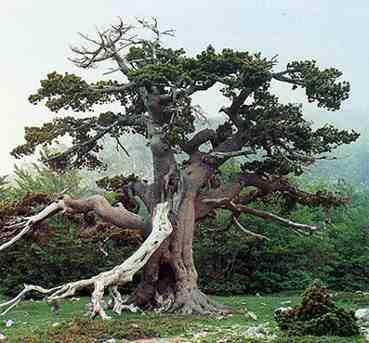Flora & Fauna in Basilicata
Basilicata. What a beautiful Discovery !

The Lucan natural environments are rich in animal and plant; the same nature of the territory, more than 80% in the high ground and the low density of human settlements, favoring the abundance and diversity of flora and fauna.
Fauna of Basilicata
Among the animal species, in fact, the Otter (Lutra Lutra) is the most important rarity (see Appennino Lucano Val d'Agri and Lagonegrese National Park), present in Italy in the territory corresponding to the so-called Great Lucania, that is the one included between Cilento, the mountains del Pollino and northern Puglia.
In the Lucanian woods it is the Fox (Vulpes Vulpes) that reigns supreme together with Faine (Martes faina) Martore (Martes martes), Weasels (Mustela nivalis) and of course the Wild boar (Sus scrofa).
But the largest predator in the region is the wolf (Canis lupus italicus) with a concentrated presence in the Pollino massif.
The Lucanian woods are a true paradise for bird watchers, especially for the large number of birds of prey.
The golden eagle (Aquila chrysaetas) is present with only two individuals while very frequent are the red kite (Milvus milvus), the kestrel (Falco tinnunculus) and the buzzard (Buteo buteo) in addition to the peregrine falcon (Falco peregrinus) to the falcon lesser kestrel (Falco Naumanni) and the increasingly rare Egyptian vulture (Neophron percnopterus).
In the Lucanian woods it is the Fox (Vulpes Vulpes) that reigns supreme together with Faine (Martes faina) Martore (Martes martes), Weasels (Mustela nivalis) and of course the Wild boar (Sus scrofa).
But the largest predator in the region is the wolf (Canis lupus italicus) with a concentrated presence in the Pollino massif.
The Lucanian woods are a true paradise for bird watchers, especially for the large number of birds of prey.
The golden eagle (Aquila chrysaetas) is present with only two individuals while very frequent are the red kite (Milvus milvus), the kestrel (Falco tinnunculus) and the buzzard (Buteo buteo) in addition to the peregrine falcon (Falco peregrinus) to the falcon lesser kestrel (Falco Naumanni) and the increasingly rare Egyptian vulture (Neophron percnopterus).
Flora of Basilicata
La flora della Basilicata comprende circa 2.350 specie, quantità notevole rispetto alla ridotta superficie della regione. L'aspetto più importante però è l'alto numero di endemismi : addirittura 168 specie pari al 6,5% della flora regionale, tra i più alti valori d'Italia.
Lungo la costa tirrenica (MARATEA) la macchia mediterranea è costituita da leccio, lentisco, fillirea, euforbia arborea, ginepro, terebinto, olivo, fico e carrubi. Sulla costa ionica l'eringio marittimo, il giglio di mare e l'ammofila arenaria, oltre a ginepro, lentisco e mirto.
La maggior parte dell'area interna è montuosa e presenta foreste di querce quali cerro , roverella e farnetto, oltre ad aceri, carpini ed olmi.
Non radi i boschi di castagno mentre il faggio è presente sul massiccio del Pollino anche oltre i 1.300 metri, insieme all'Abete bianco.
E' il pino loricato (pinus leucodermis) ad essere la specie floreale più importante del Pollino e l'emblema stesso del Parco.
Lungo la costa tirrenica (MARATEA) la macchia mediterranea è costituita da leccio, lentisco, fillirea, euforbia arborea, ginepro, terebinto, olivo, fico e carrubi. Sulla costa ionica l'eringio marittimo, il giglio di mare e l'ammofila arenaria, oltre a ginepro, lentisco e mirto.
La maggior parte dell'area interna è montuosa e presenta foreste di querce quali cerro , roverella e farnetto, oltre ad aceri, carpini ed olmi.
Non radi i boschi di castagno mentre il faggio è presente sul massiccio del Pollino anche oltre i 1.300 metri, insieme all'Abete bianco.
E' il pino loricato (pinus leucodermis) ad essere la specie floreale più importante del Pollino e l'emblema stesso del Parco.
A very long-lived pine

A white-skinned conifer from the Balkans, which has withstood the onslaught of the beech for millennia, the Bosnian pine stands between 900 and 2,100 meters high and is among the longest-lived plants of all, with specimens reaching up to 950 years of age.
www.maratea.info is managed by
AltriTurismi ets Association
-
Support our Association MAKE A DONATION !
AltriTurismi ets Association
-
Support our Association MAKE A DONATION !



